Nidecker Sensor Team Snowboard Review
Nidecker sent me two boards to test this season: the Beta powder board and the Sensor Team twin. This is the perfect recipe for starting a quiver – one board for powder and one board for everything else. While there will be a separate review for the Beta, let’s talk about the Sensor Team.
Sensor Width and Sizing
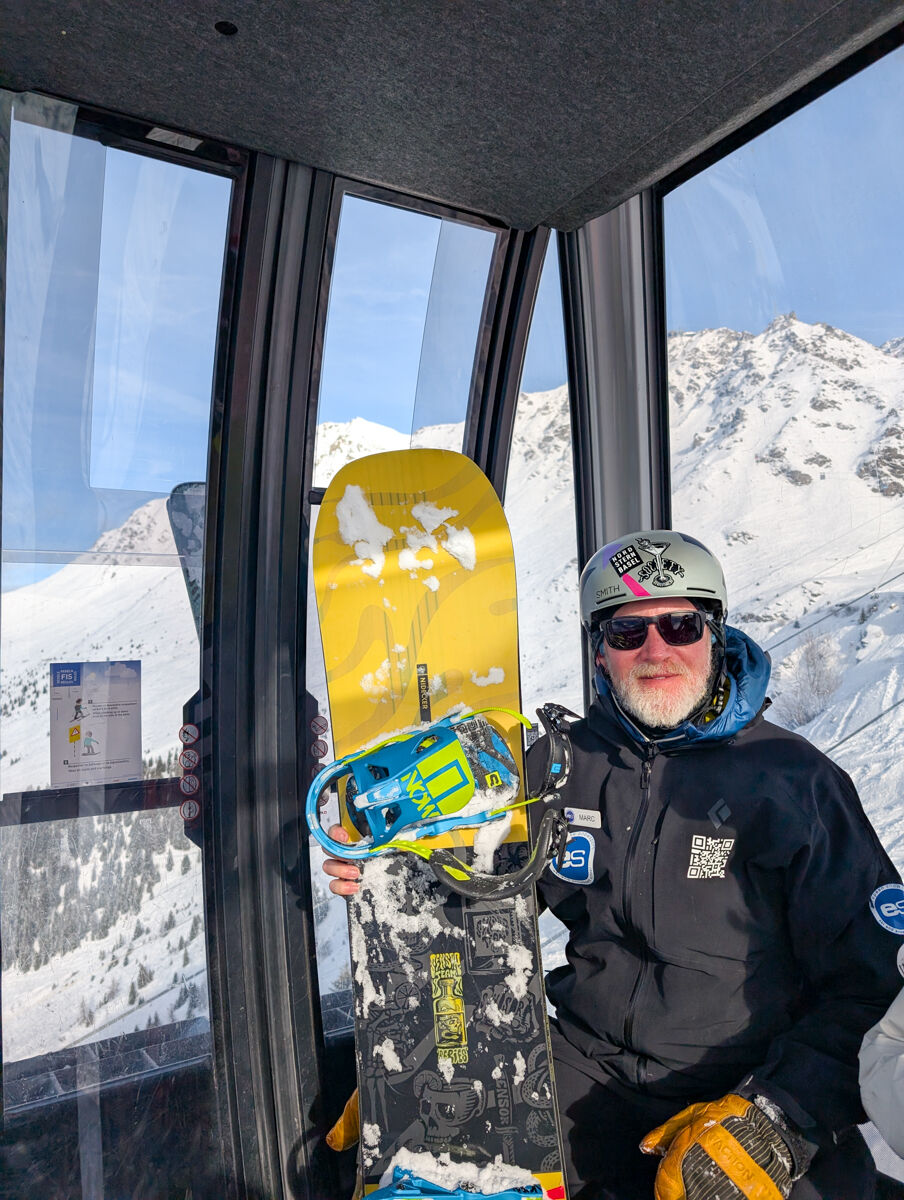
I tested the largest of the Sensor Team decks. At 159cm and a waist width of 26.4, on paper, this looks like a park board for larger riders with big feet. The side cut radius is 7.6 meters, which is smaller than the usual recipe of 8 meters for similar boards. The width is where the Sensor strays from the norm, as there are few options for sub-160 cm boards that are over 260mm wide on the market. Combine a traditional camber to the Sensor’s shape, and what you are looking at is the type of board that could fit into any rider’s quiver.
At 200lbs. or 90 kg, I felt the flex pattern worked well for me. My son, who is slightly taller than me but 50 pounds lighter, took it out. He loved it and was able to flex the board no problem.
Stiffness
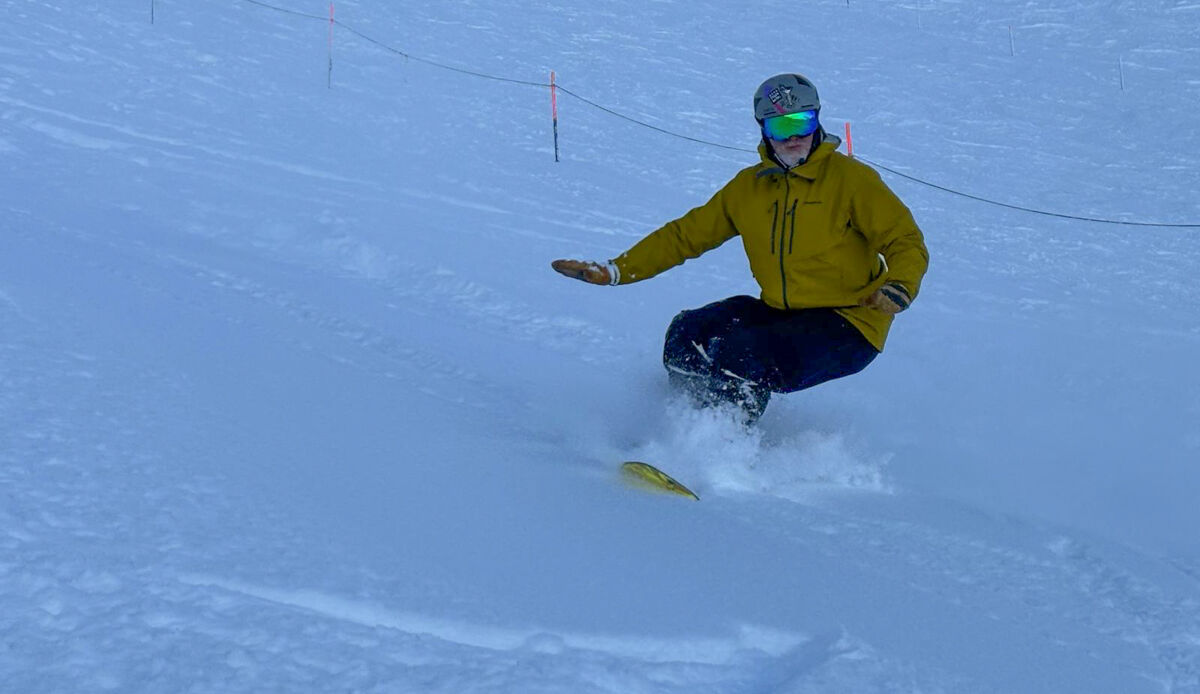
The board was not too stiff, and the rebound was spot on. I’d describe the flex on the board as 7/10, definitely not a soft board, but the stiffness felt poppy and energetic, rather than just stiff, this might be in part due to the carbon stringers Nidecker added to the layup. You do not have to be a heavy person to ride and flex the Sensor Team.
This Nidecker snowboard is great for taller riders, and the Sensor’s width is definitely appreciated for someone like me with size 11 feet. I usually ride a 61-cm or 24-inch wide stance. If I mount a new board, I mount the bindings at the widest set of inserts. Not on this board! You can set your stance past 65cm wide and I probably could have mounted old-school baseless bindings! I really appreciated having these wider mounting options at 6’1’’.
What can be improved?
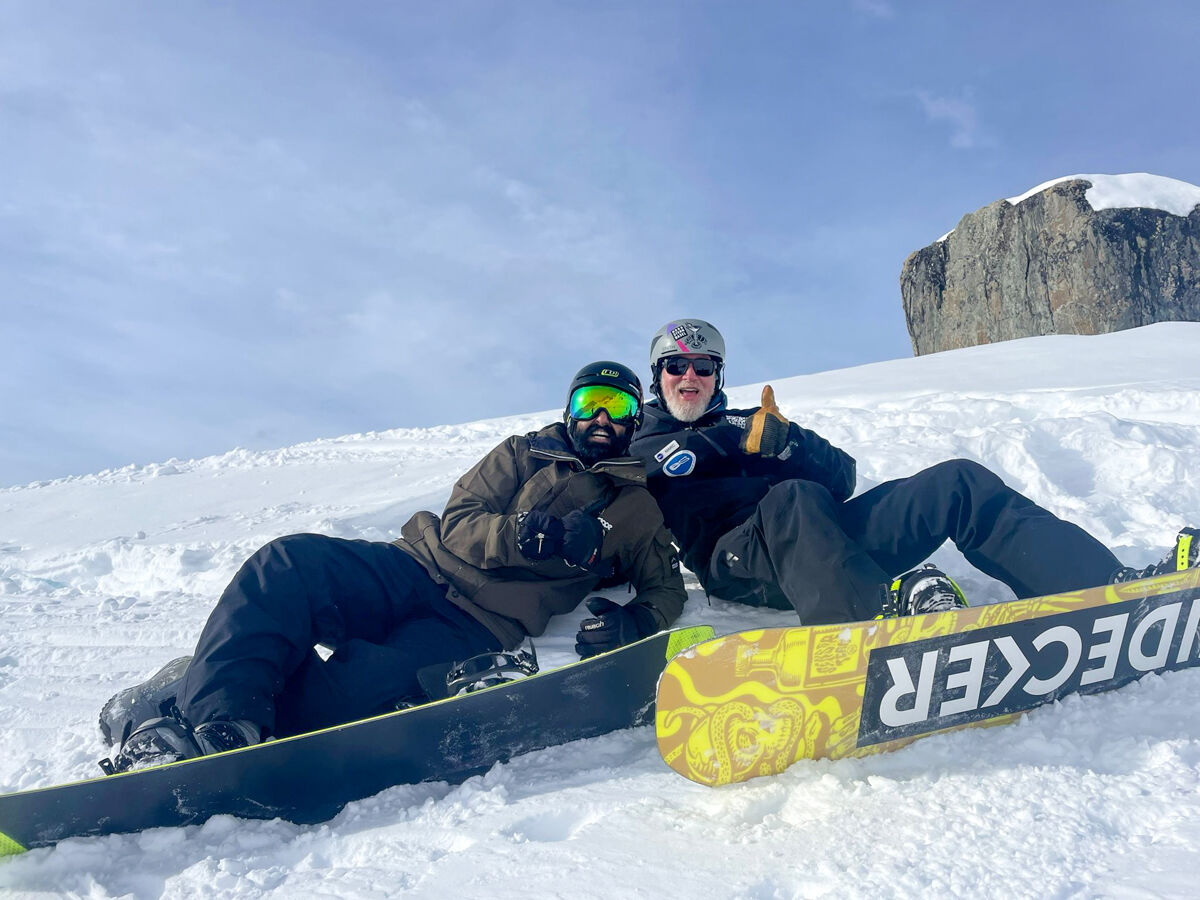
For me, this board is really great. For my own personal taste, I would like it even wider for carving on piste, to get higher edge angles. In general, I tend to prefer wider boards to avoid the heel and toe drag I get when laying deep carves. The sensor’s width is great, but I’d like maybe another 5 millimeters of width.
Pros & Cons
Pros:
- Super wide stances are available. Great for taller people!
- Traditional camber
- Carbon stringers give the board a nice ‘pop’
- Low profile nose helps it float in powder
Cons:
- Doesn’t perform well in wetter, heavier snow.
- At the end of the day the Sensor is a resort board, It was not designed for gnarlier conditions. (We will talk about the Beta later)
How’s it Ride?
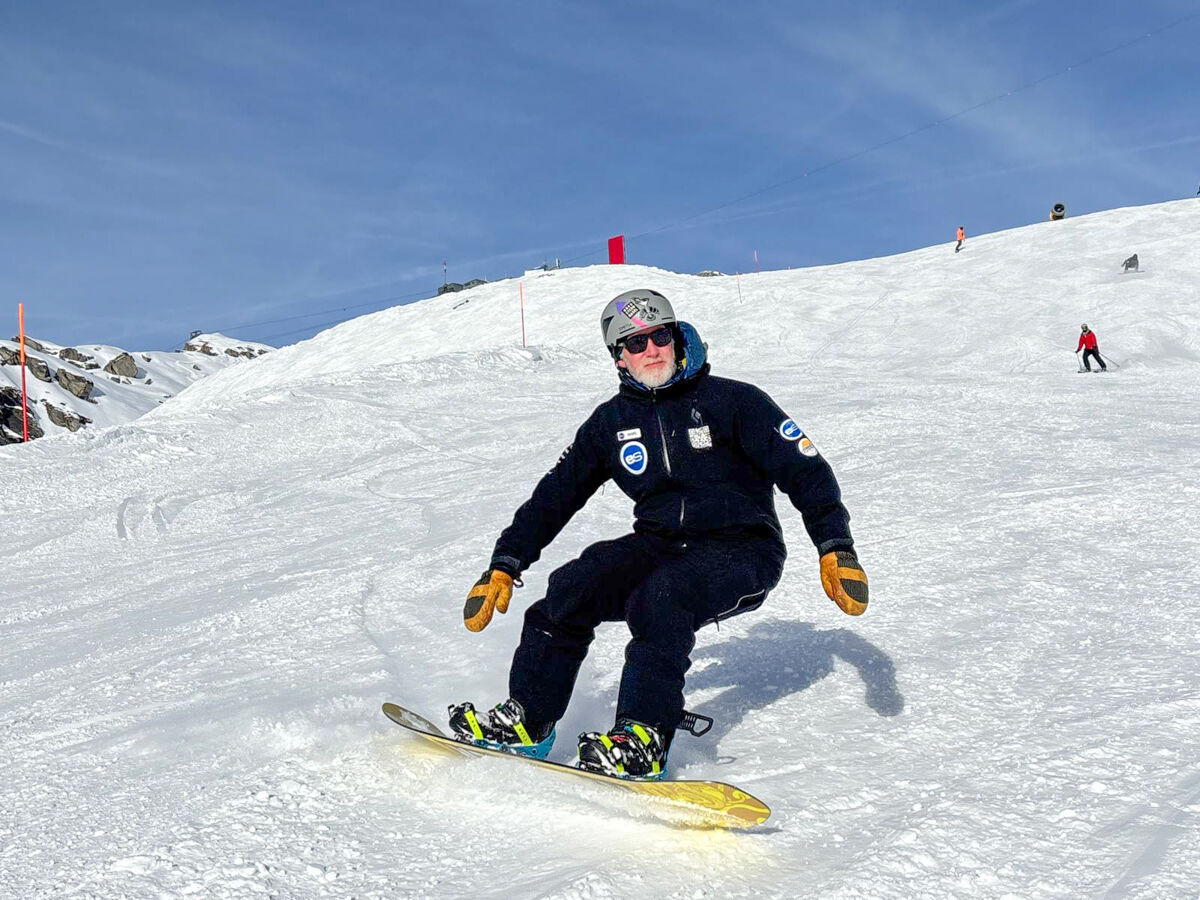
The Nidecker Sensor Team Twin Snowboard has no right to be this fun. From park to powder, the Sensor can handle it all with style. One of my favorite boards was a 2011 Lib Tech Travis Rice Snowboard. Back in the day, this was one of the best-balanced twin-shaped decks you could strap into, I never had any issues with leg cramping in powder, and It rode switch like a dream. The search to replace the feeling of that beloved board is over, the sensor fills the void in my quiver that the Rice left. (If you see my friend Kyle who “borrowed” my Rice, tell him I want it back.)
Reflecting on my testing, my second day on the board defines my experience with the Sensor. December 7th was Santa Day in Verbier, where you dress like St. Nick, get a cheap lift ticket, and raise money for charity. All 2,000 Santas brought the snow, and it became a whiteout. The weather moved in on my second run, my goggles iced over, and I became badly disoriented.
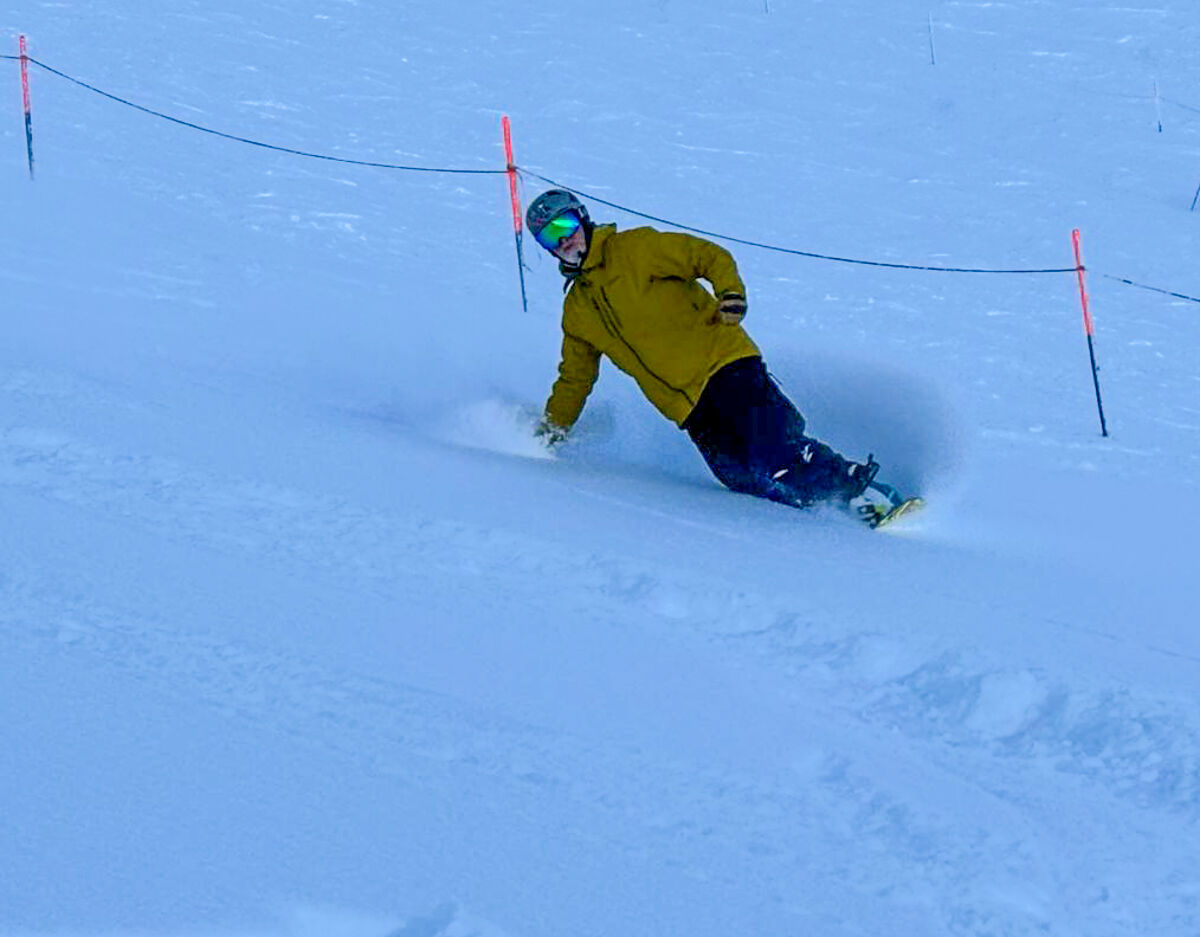
The best thing about the Nidecker Sensor Twin Team was that I didn’t have to think about it. It was such a struggle to get down the hill in those conditions, but the board performed incredibly reliably. This was a new board, which I only had only had a few runs on. There was no need to adjust my style, or ‘learn the board’- It did what I needed it to from the first time I strapped in.
Over the next few days, I put in more laps and used it for teaching. A twin shape is what I use for teaching most of the time; when some of your students are goofy and some are regular, you need a board that can do anything in any direction. As I initially stated, every quiver should start with a cambered twin and a powder board. Many riders do not ride a lot of switch, but it is an important skill. Riding switch give you twice as many options in your riding. Switch riding can save you from muscle cramps on long traverses or make a run you have done 100 times into a new challenge.
The board carves well, being wide and cambered. Its low-profile nose gives it a long edge contact length, allowing for confidence on-edge. Riding switch feels natural. The torsional flex helps you control presses and butters. The carbon fiber stringers give the tail a nice pop on ollies. The Sensor is checking all my boxes for a twin.
The other night, there was 10cm of new snow overnight, but I was thinking it would be ‘dust on crust’ and going off-piste would rattle my teeth. The Nidecker Beta that I was also testing at the time was left at home, despite common sense telling me to take thFe powder board: I decided the Sensor would be my ride for the day.
The Mt Fort tram, the highest lift in Verbier, opened up – the snow was more than boot deep! I was at 3,300 meters and grinning ear to ear. This was a happy surprise, except the powder board was at home. My choice to take this little 159, center-mounted twin did not disappoint me, it rode like a champ! It felt like a directional board, getting on plane quickly, and allowed me to ride the face with confidence! I even made some switch pow turns. There was no rear leg cramp; there was no need to overly lean on the back foot like other twins of this size might have needed me to do. I just kept having fun on the Sensor.
Overall Impression
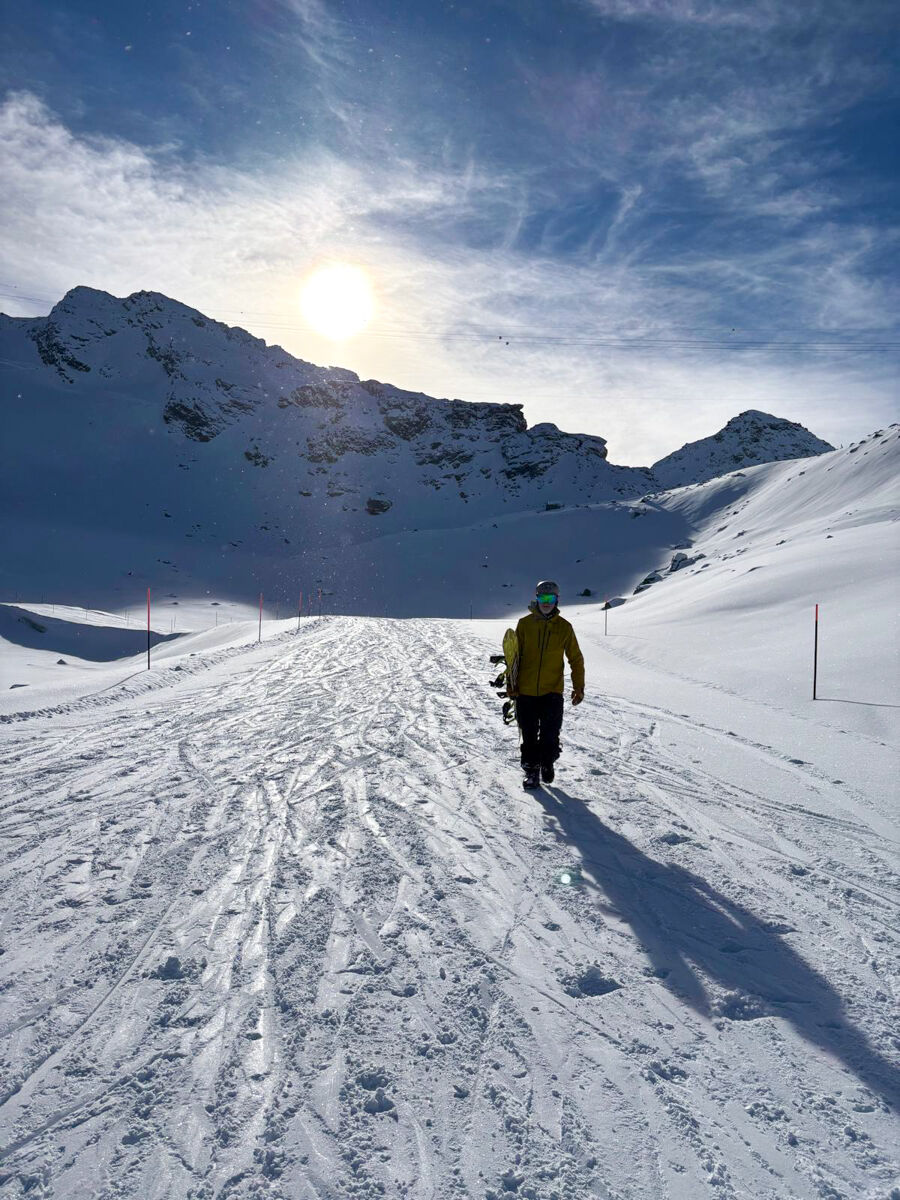
It makes for a great day when you find the magic mix of camber, flex, and sidecut that just works. For me, the Nidecker Men’s Sensor Team Snowboard ($499.95) has found that perfect mix for an all-mountain board. Many cambered twins for bigger riders are extremely stiff. While that can work on piste for everyday riding, the stiff flex pattern can make them feel dead in powder, and you lose grip in slush. Many rockered and flat twins are designed more for powder and soft snow. Boards with softer flexes tend not perform as well at high speed and on harder snow.
Even though it was designed as a true twin park board, the Sensor is a board that you would be happy to ride all over the mountain on all but the deepest days.
-

 Christy Sports
Christy Sports$499.95$299.97Buy Now -
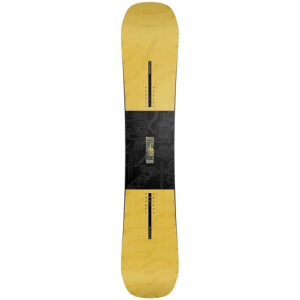
 PRFO Sports
PRFO Sports$ 601.99 (CAD)$ 300.99 (CAD)Buy Now -

 Amazon US$349.96Buy Now
Amazon US$349.96Buy NowAmazon.com Price: $349.96 (as of 12/28/2025 12:45 MST) Details
Product prices and availability are accurate as of the date/time indicated and are subject to change. Any price and availability information displayed on Amazon.com at the time of purchase will apply to the purchase of this product.
-

 Blue Tomato£420.00Buy Now
Blue Tomato£420.00Buy Now -

 evo$674.91Buy Now
evo$674.91Buy Now

